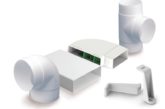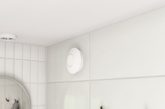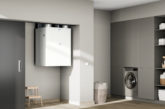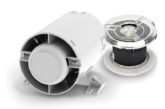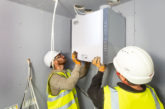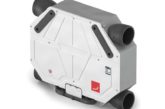
Natasha King, Product Manager at Vent-Axia, gets us up to speed with Part F of the Building Regulations and explains more about the opportunities this presents.
As buildings become more airtight to improve efficiency, it’s essential to consider indoor air quality (IAQ) to protect health and wellbeing. The new Part F therefore sets out significant changes, which will drive adoption of low carbon ventilation as an industry standard. The Regulations come into force in June 2022 and will impact anything without planning from that date. Anything which already has planning has until June 2023.
A key addition to the Regulations is a new sub section ‘Installing Energy Efficiency Measures’ in existing properties. Here it sets out that: “When carrying out energy efficiency measures to an existing dwelling, an assessment should determine what, if any, additional ventilation provision is needed, based on the estimated impact of the work.” This is important since previously many homes have suffered from condensation, mould and poor IAQ following energy efficiency measures. This move will help protect health and wellbeing of households and protect buildings from damp, condensation and mould caused by moisture being unable to escape. It will also provide an opportunity for electricians to offer additional ventilation to customers.
Calculating ventilation
Part F provides two options for calculating the new ventilation requirements when energy efficiency measures are added:
a) a simplified method which looks at what energy efficiency measures have been added and whether they are minor (e.g. roof insulation, cavity wall insulation) or major (e.g. installing external or internal wall insulation over 50% of external wall area, replacing more than 30% of windows and doors) and then it works out if more ventilation is needed. This method should be appropriate for the majority of existing dwellings.
b) provides the alternative of expert advice. This is most suited if a property is significantly different from its original construction when it comes to energy efficiency measures.
With the simplified method a home that falls under Category A (a maximum of two minor changes and no major changes) is likely to need no additional ventilation. However, for Categories B and C, more than three minor changes, and/or one or more major measures, it is likely that additional ventilation will be required.
This could be provided by the inclusion of either intermittent extract fans to wet areas and trickle vents that meet Part F; continuous mechanical extract with smaller trickle vents in habitable rooms only; or balanced supply and extract (normally heat recovery) without trickle vents. This, along with Appendix D in Part F, provides an excellent tool for electricians to use where they can easily show customers whether they need to add more ventilation. Around 85% of homes in the UK have double glazing so in most existing properties where energy efficient measures have been applied an upgrade in ventilation is needed. For electricians working in homes that already have energy efficiency measures added, or are in the process of adding them, this is the ideal opportunity to easily upsell ventilation measures.
What are the ventilation options for existing homes?
There are a wide range of extractor fans available to help provide effective ventilation and comply with Part F. For example, Vent-Axia’s Lo-Carbon Svara offers condensation control (to avoid mould) which helps improve IAQ and is backed up by easy installation, quiet operation and is controllable via a smartphone. Meanwhile, Vent-Axia’s Silent Fan range boasts 17 models, very low sound levels and a raft of new features, including IPX5-rating (for Zone 1) making installation easier and safer. And the Vent-Axia PureAir Sense features Odour Sense technology that increases airflow when the air is poor, helping ensure a comfortable living environment.
What about existing homes that require whole house ventilation?
It’s very difficult to retrofit a whole house system but fortunately there is a new type of decentralised heat recovery ventilation (dMVHR) that is ideal for retrofitting to provide a whole-house system. This concept is Alternate Flow Heat Recovery, which offers a balanced modular customisable ventilation system. This type of technology, such as Vent-Axia’s Lo-Carbon Heat Save, uses two or more fans in habitable rooms. The units use a reversible fan that alternates between supply and extract fan modes to extract dirty air from the room and replace it with filtered outside air. It’s easy to expand as needed for a whole house solution, all controllable from one controller. Achieving up to 84% heat recovery, dMVHR uses the warmth from outgoing air to heat incoming air to avoid heat loss, reducing a home’s carbon footprint and energy bills.
www.vent-axia.com/range/residential-ventilation






